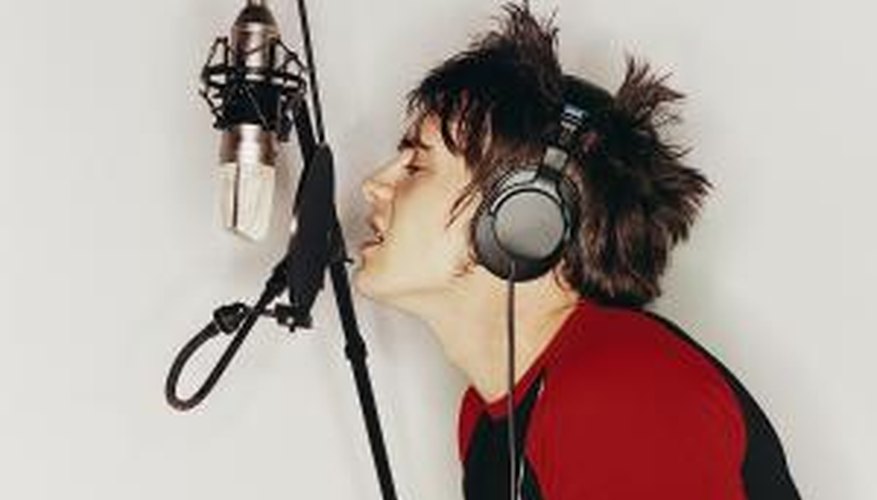Stereo microphone technique is an excellent way to capture natural-sounding music efficiently. In the case of choirs, classical music and acoustic ensembles, it is often the best method for recording. With each additional mic added, potential complications increase. Stereo miking is an application of the "keep it simple" principle. However, there are considerations and disadvantages of several stereo mic techniques.
Blumlein Pair
Two bidirectional (figure-8) pattern microphones, arranged so that pickup patterns cross at 90 degrees, can provide one of the most vivid stereo images compatible with both speakers and headphones. However, due to the fact that the reverse lobes of sensitivity pick up equally behind the microphones, successful recording depends on excellent room acoustics for successful results. This configuration may capture too much ambient sound or audience noise.
X-Y Pair
Using cardioid pattern microphones crossed in the same manner as the Blumlein pair, the issue of pickup of sound from the rear is eliminated. Room sound and audience noise is reduced, but at the expense of stereo image. This configuration depends solely on differences of intensity of sound arriving at each microphone. Given the close proximity, this can sometimes be negligible, narrowing the stereo field without sound pickup from the rear of the mics.
- Using cardioid pattern microphones crossed in the same manner as the Blumlein pair, the issue of pickup of sound from the rear is eliminated.
- Given the close proximity, this can sometimes be negligible, narrowing the stereo field without sound pickup from the rear of the mics.
ORTF
Near-coincident mic arrangements, such as the ORTF array (7 inches apart, 110 degree angle between mics) use a combination of intensity differences and time-of-arrival differences to create a stereo image. However, any time microphones are separated by distance to capture the same sound, time-of-arrival differences create the potential for comb filtering, which can cancel or add frequencies in an unnatural way.
Mid-side Array
This pattern uses one forward-facing microphone and one bidirectional microphone with its pickup lobes at a right angle to the axis of the first mic. The bidirectional mic signal is split and sent to two channels, with the phase inverted on one channel, one channel panned left and the other panned right. This is called "decoding." The volume of the bidirectional mic controls the stereo image. This arrangement also prefers good acoustics and suffers from excess audience noise or, with reduced bidirectional signal to control ambience, a narrow stereo image.
- This pattern uses one forward-facing microphone and one bidirectional microphone with its pickup lobes at a right angle to the axis of the first mic.
